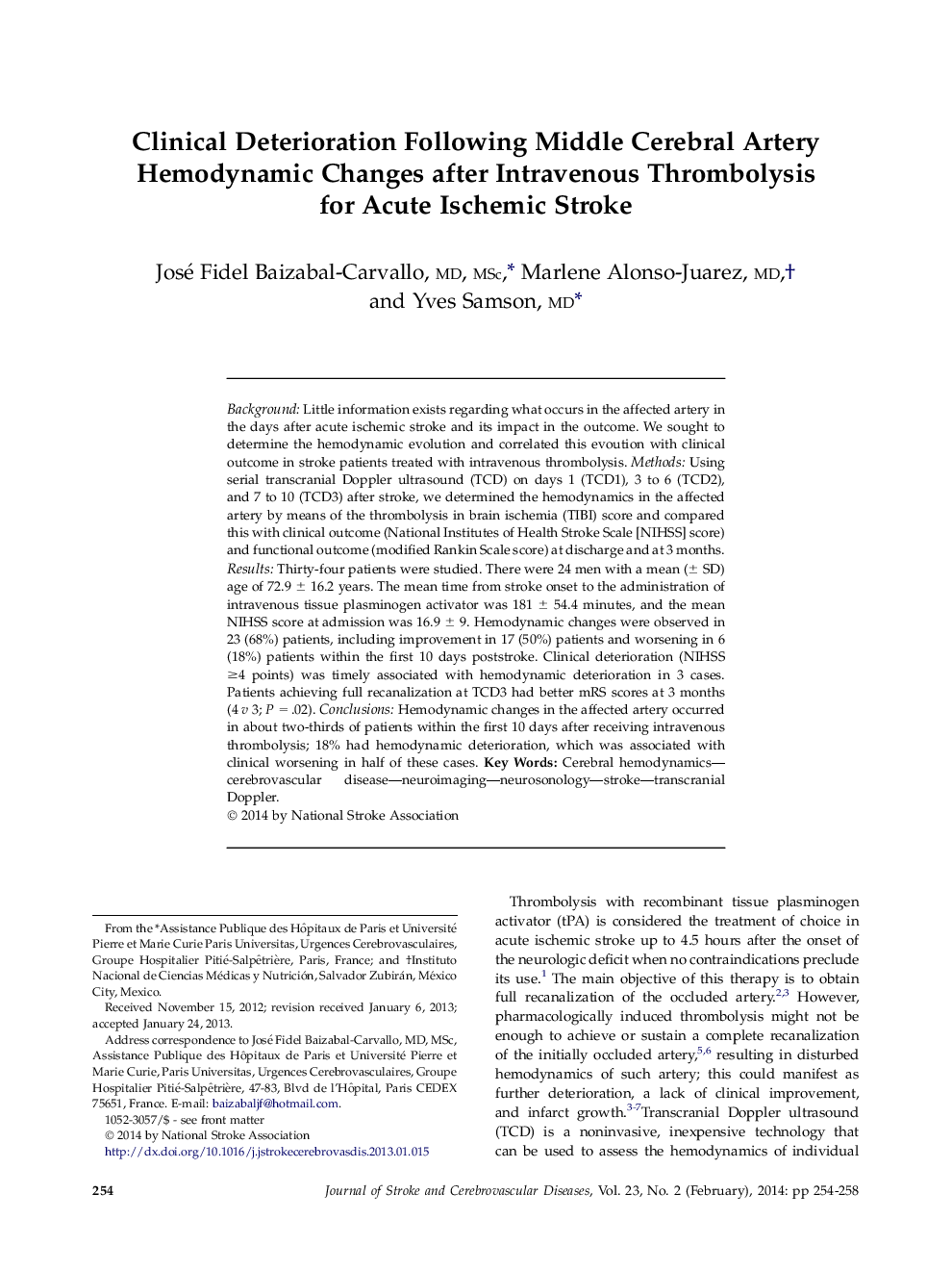| Article ID | Journal | Published Year | Pages | File Type |
|---|---|---|---|---|
| 5873409 | Journal of Stroke and Cerebrovascular Diseases | 2014 | 5 Pages |
BackgroundLittle information exists regarding what occurs in the affected artery in the days after acute ischemic stroke and its impact in the outcome. We sought to determine the hemodynamic evolution and correlated this evoution with clinical outcome in stroke patients treated with intravenous thrombolysis.MethodsUsing serial transcranial Doppler ultrasound (TCD) on days 1 (TCD1), 3 to 6 (TCD2), and 7 to 10 (TCD3) after stroke, we determined the hemodynamics in the affected artery by means of the thrombolysis in brain ischemia (TIBI) score and compared this with clinical outcome (National Institutes of Health Stroke Scale [NIHSS] score) and functional outcome (modified Rankin Scale score) at discharge and at 3 months.ResultsThirty-four patients were studied. There were 24 men with a mean (± SD) age of 72.9 ± 16.2 years. The mean time from stroke onset to the administration of intravenous tissue plasminogen activator was 181 ± 54.4 minutes, and the mean NIHSS score at admission was 16.9 ± 9. Hemodynamic changes were observed in 23 (68%) patients, including improvement in 17 (50%) patients and worsening in 6 (18%) patients within the first 10 days poststroke. Clinical deterioration (NIHSS â¥4 points) was timely associated with hemodynamic deterioration in 3 cases. Patients achieving full recanalization at TCD3 had better mRS scores at 3 months (4 v 3; P = .02).ConclusionsHemodynamic changes in the affected artery occurred in about two-thirds of patients within the first 10 days after receiving intravenous thrombolysis; 18% had hemodynamic deterioration, which was associated with clinical worsening in half of these cases.
